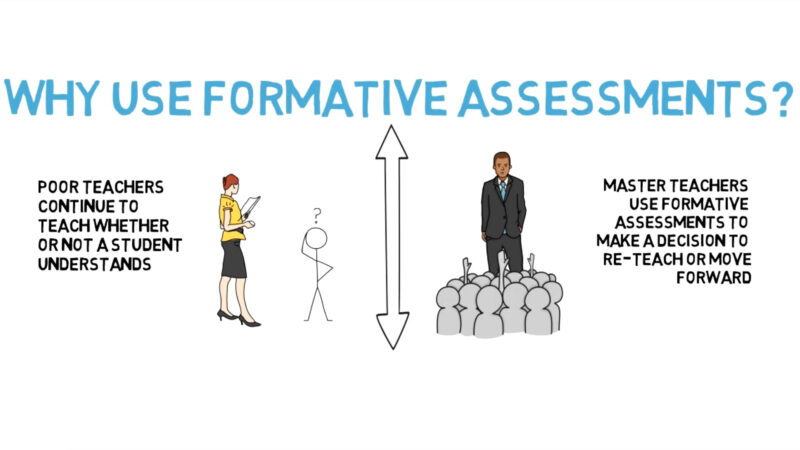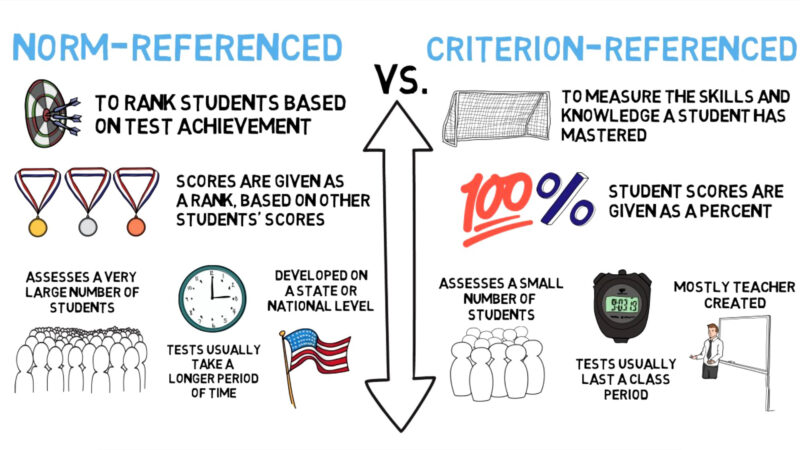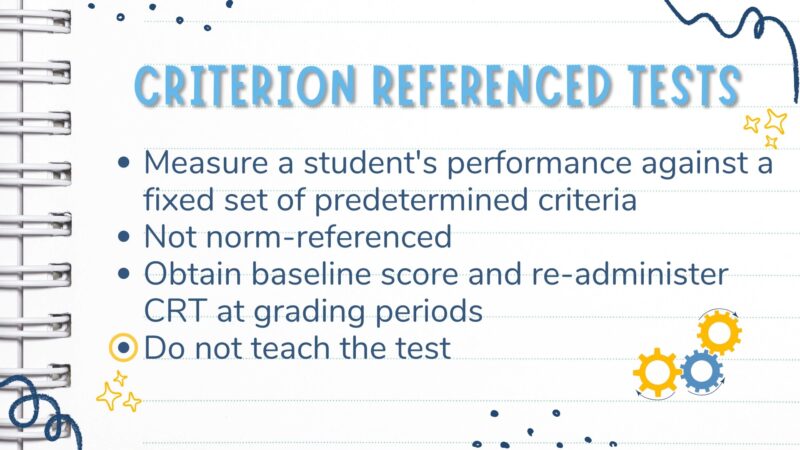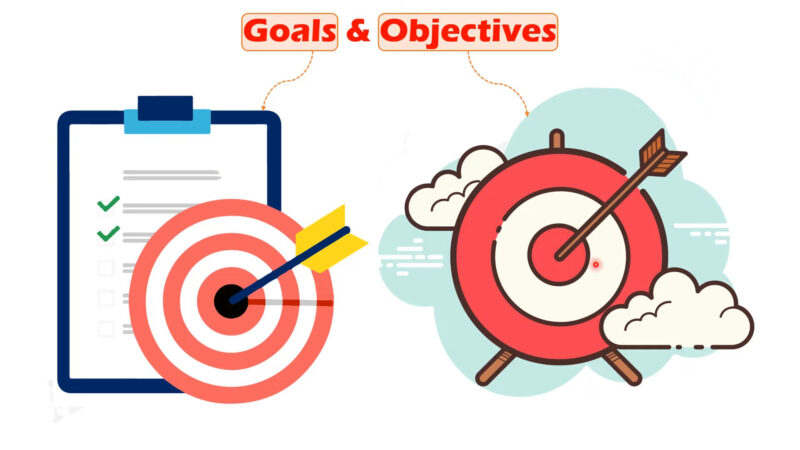Assessment is a multifaceted tool that not only gauges student understanding and progress but also guides educators in refining their teaching strategies. The concept consists of a diverse range of methods, each serving its purpose.
From traditional tests to innovative, interactive evaluations, these assessments provide crucial insights into the educational process. They help in identifying strengths, pinpointing areas for improvement, and tailoring instruction to meet the diverse needs of learners.
Today, we want to talk about different types of assessment in greater detail.
1. Diagnostic Assessment
Diagnostic assessment is a crucial tool in the educational process, serving as a preliminary evaluation to gauge students’ existing knowledge and perspectives on a particular subject. This type of assessment typically involves a set of written questions, which can be in two main formats:
- Multiple-choice
- Short-answer
They are administered at the beginning of a unit, course, or discussion. The primary goal of diagnostic assessment is to establish a baseline understanding of where the class stands academically, emotionally, or ideologically.
This information is vital for educators to tailor their teaching strategies and course material effectively. Tools commonly used in diagnostic assessments include:
- Journals
- Quizzes or tests
- Conferences or interviews
- Posters
- Performance tasks
- Mind maps
- Gap-closing activities
- Student surveys
These tools help in identifying the areas where students may need additional support or enrichment. By understanding students’ starting points, educators can create more targeted and effective learning experiences, ultimately leading to better academic outcomes.
Diagnostic assessments also play a significant role in setting the tone for the learning ahead, making them an indispensable part of the educational toolkit.
2. Formative Assessment

Formative assessment is an integral part of the learning process, offering a dynamic approach to evaluating student understanding, requirements, and academic achievement as they unfold during the course. Unlike summative assessments, which evaluate learning at the end of an instructional period, formative assessments are ongoing and provide real-time feedback to both teachers and students.
This continuous feedback loop allows educators to identify areas where students struggle and adjust their teaching methods accordingly. Techniques for formative assessment include analysis of students’ work, strategic questioning, the think-pair-share method, admit/exit tickets, and one-minute papers.
These strategies not only assess students’ grasp of the material but also encourage active participation and critical thinking. Formative assessments are less about grading and more about guiding students through their learning journey.
They help in creating a supportive learning environment where students can understand their progress and areas for improvement, fostering a culture of continuous learning and growth.
3. Summative Assessment
Summative assessment is a comprehensive evaluation method used to measure students’ learning, skill acquisition, and academic achievement after a defined educational period. This type of assessment is often used at the end of a project, unit, course, semester, or academic year.
Summative assessments are typically formal and include tools like:
- Tests
- Assignments
- Projects
They are crucial in determining whether students have met the learning objectives and acquired the necessary knowledge and skills. The results of summative assessments are often recorded as scores or grades and may contribute to a student’s permanent academic record, influencing future educational opportunities.
These assessments play a significant role in the education system, from report cards to college admissions. While they provide a snapshot of student achievement at a particular point in time, summative assessments also offer valuable insights for educators to evaluate the effectiveness of their teaching methods and curriculum design.
4. Norm-Referenced Assessment

Norm-referenced assessment is a method of evaluation that focuses on comparing a student’s performance to that of their peers. This type of assessment is particularly useful in understanding where a student stands about a larger group, such as a class or grade level.
It involves evaluating the skills or knowledge of students within a specific context and determining how an individual’s test results stack up against those of their peers. Common examples of norm-referenced assessments include class exams, auditions, job interviews, and debate competitions.
These assessments are not just about measuring what a student knows or can do. They are about understanding how a student’s performance compares to others in a similar group.
This comparison can provide valuable insights into a student’s relative strengths and weaknesses, helping educators tailor their instruction to meet the needs of each student more effectively. However, it’s important to use these assessments judiciously, as they can sometimes create undue competition and stress among students.
5. Ipsative Assessment
Ipsative assessment is a unique form of evaluation that focuses on self-comparison rather than comparing students against each other. This type of assessment is particularly effective in measuring a student’s progress and development over time.
In ipsative assessments, students are typically asked to choose from several options that are all considered socially desirable, and there is no external scale against which the responses are measured. The key advantage of ipsative assessment is that it allows students to gauge their development by comparing their current performance with their past performances.
This method is beneficial for fostering a growth mindset, as it emphasizes personal improvement and learning progress. Ipsative assessments can take various forms, including surveys, self-reflections, and portfolio reviews.
They encourage students to reflect on their learning journey, recognize their achievements, and set goals for future improvement.
6. Criterion-Referenced Assessment

Criterion-referenced assessment is a method that evaluates a student’s performance against a specific set of criteria or learning standards. Unlike norm-referenced assessments, which compare students to each other, criterion-referenced assessments measure how well students have learned the material relative to a predetermined standard or benchmark.
This type of assessment is commonly used in standardized testing and is integral to ensuring that the skills, knowledge, and understandings outlined by the learning objectives align with what is being assessed. Criterion-referenced assessments are valuable tools for helping students develop strong self-evaluation skills.
They provide clear benchmarks for students to understand what is expected of them and how they can improve their work. These assessments can take various forms, including tests, projects, and presentations, and are essential for determining whether students have met the curriculum’s expectations.
They play a crucial role in guiding instructional decisions and ensuring that all students achieve the desired learning outcomes.
7. Scenario-Based Assessment
Scenario-based assessment is an innovative approach that immerses students in interactive, real-world scenarios, requiring them to apply their theoretical knowledge to practical situations. A Scenario-Based variant is designed to go beyond traditional testing methods, encouraging active learning and critical thinking.
In these assessments, students are presented with hypothetical situations relevant to the subject matter and are asked to respond or make decisions based on their understanding and analysis. The strength of scenario-based assessment lies in its ability to simulate real-life challenges, thereby providing a more accurate measure of a student’s ability to apply knowledge in practical contexts.
It is particularly effective in subjects where decision-making, problem-solving, and critical thinking are key. Educators can use this method to assess a student’s comprehension more precisely, observing how they apply newly learned information in practical scenarios.
This type of assessment not only enhances learning but also prepares students for real-world challenges.
8. Oral Assessment

Oral assessment is a dynamic and interactive method of evaluating students’ knowledge and skills through spoken communication. It can take various forms, including presentations on prepared forms like:
- Topics
- Interviews
- Discussions
- Simulations
It is particularly effective in gauging a student’s understanding, thought processes, and ability to articulate their knowledge. It also provides insights into their conceptual understandings or misunderstandings.
Oral assessments are valuable in fostering a stronger sense of connection between teachers and students, as they allow for immediate feedback and clarification. They can be used across a range of subjects and are especially useful in language learning, history, and social studies.
Oral assessments encourage students to develop their communication skills, think on their feet, and engage more deeply with the subject matter. They also provide educators with a clearer picture of a student’s proficiency and areas for improvement.
FAQs

What are the 4 areas of Assessment for Learning?
The four key areas of Assessment for Learning are: identifying learning goals, eliciting evidence of learning, providing feedback, and peer and self-assessment.
What is an example of an Assessment for Learning?
An example of Assessment for Learning is the use of exit tickets at the end of a class. Students write a brief response to a question related to the day’s lesson, which helps the teacher gauge their understanding of the topic and adjust future instruction accordingly.
What is the best type of assessment in education?
The best type of assessment in education depends on the learning objectives and context. However, formative assessments are highly effective as they provide ongoing feedback and allow for adjustments in teaching to meet students’ learning needs.
What are the 5 components of an assessment tool?
The five components of an assessment tool are Clear Objectives, Validity, Reliability, Practicality, and Fairness.
The Bottom Line
Each type of assessment serves a specific purpose, from diagnosing student understanding at the outset to measuring their achievements at the end of a learning cycle. These assessments are not just about assigning grades; they are about understanding and facilitating the learning journey of each student.
They empower educators to make informed decisions, adapt their teaching methods, and provide targeted support where needed. In the ever-evolving landscape of education, these diverse assessment methods stand as crucial pillars, supporting the continuous growth and development of learners.
